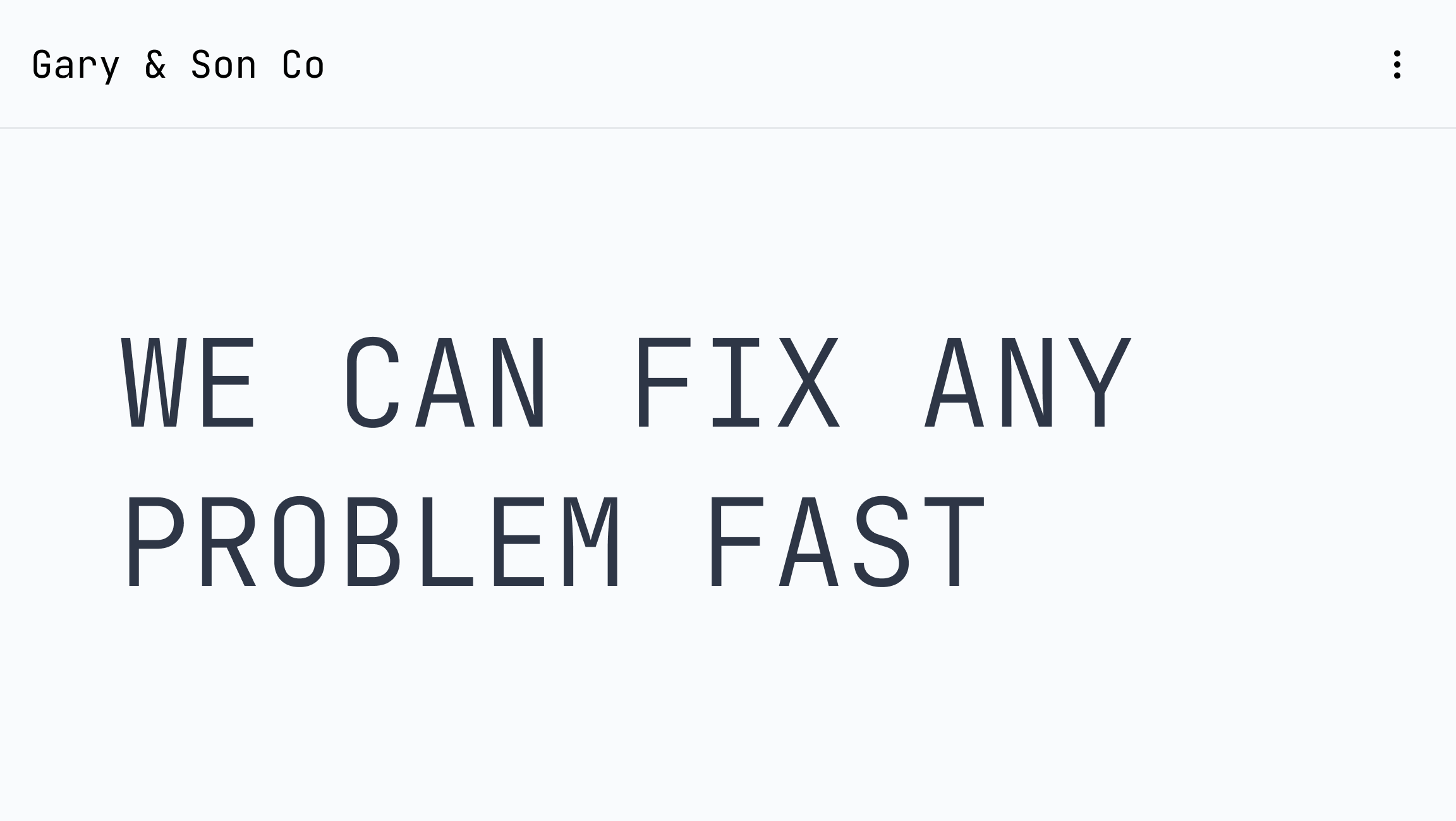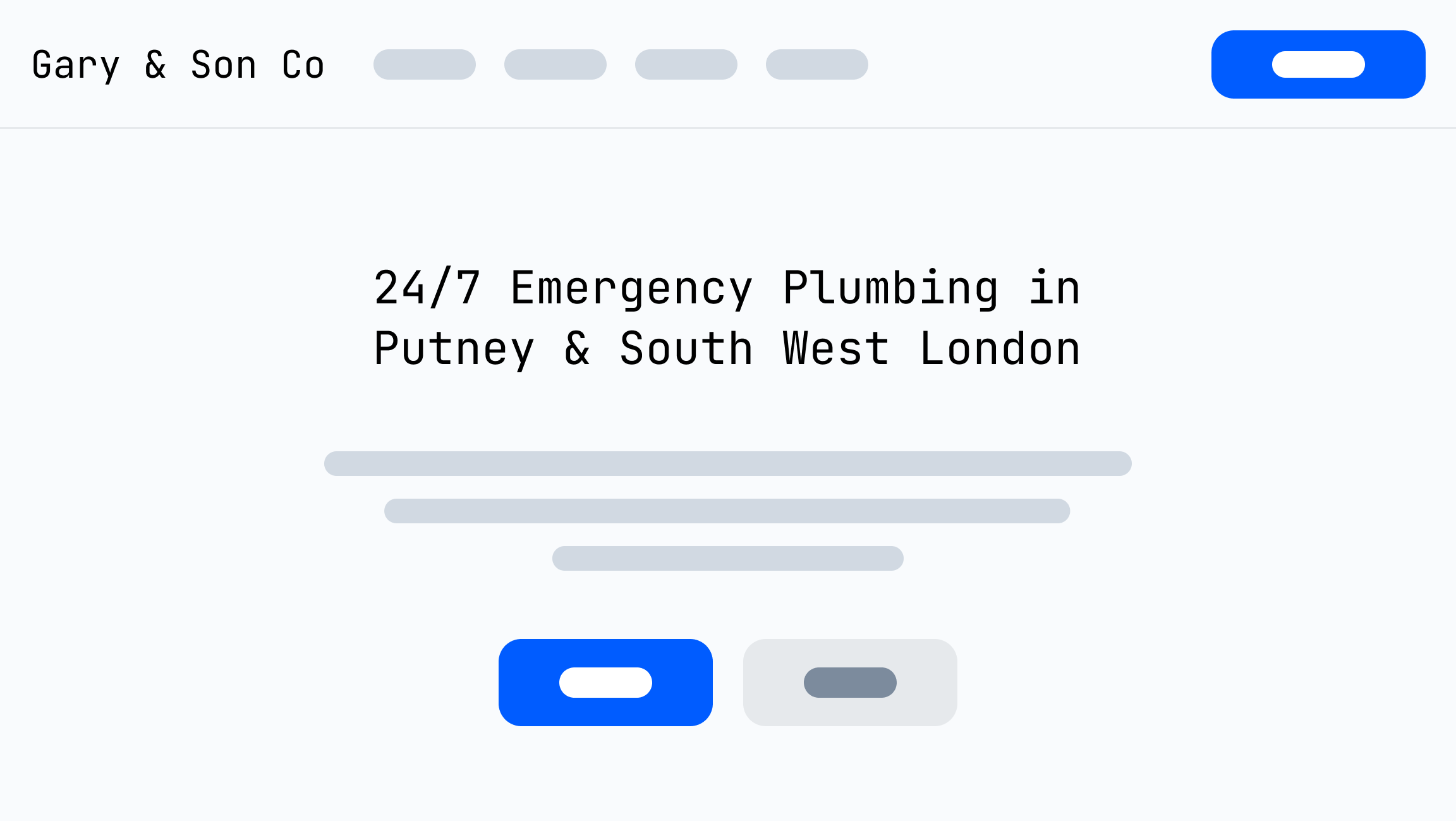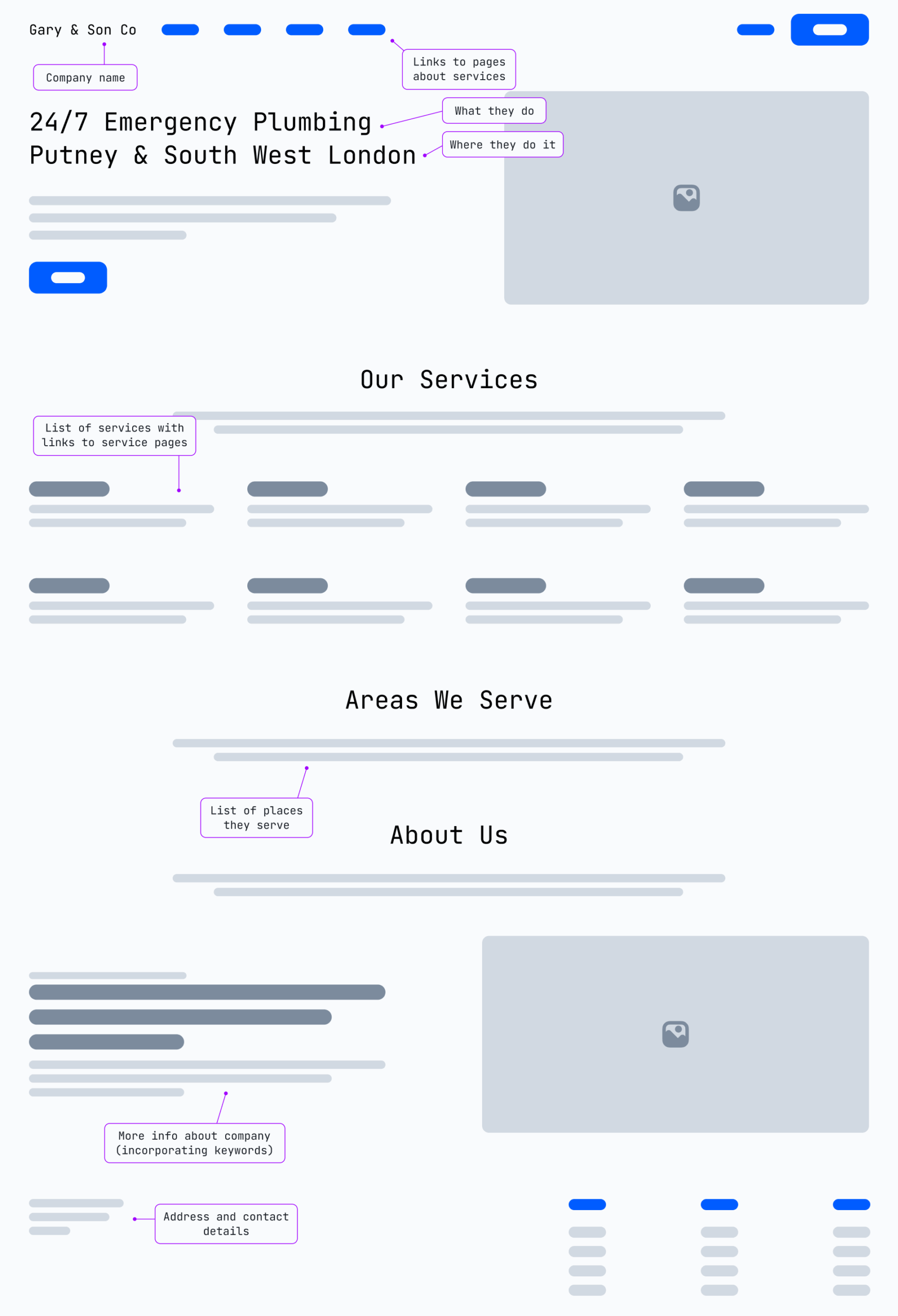How I Do Things
Every web developer and designer has their own way of working, but not all approaches are created equal. This page explains my methods and philosophy, how I approach SEO, design, and development differently from many others in the industry, and why I think it leads to better results for my clients.
Web Design
I love well-designed websites that look polished and professional. But if making something look pretty means it becomes confusing or difficult to use, you’ve missed the point entirely. Good design should make things easier, not harder – and surprisingly often, that’s where many designers and developers get it wrong.
When Design Gets in the Way
I come across so many websites that are clearly designed to impress other designers rather than help actual users. They’ve got all the trendy elements – parallax scrolling, massive text, hidden menus, artistic layouts, animated cursors – but try to find a phone number or figure out what the company actually does, and you’re stuck.

Artistic but unhelpful – what do they actually do?

Designed for customers who need a plumber right now.
It’s particularly frustrating because the people who struggle most with these sites (older users, less tech-savvy visitors) are often the ones with money to spend. I always try to look at my websites from the perspective of users, and build something that looks good but is still easy to use.
Lack of Polish
More commonly, I encounter websites that do their job but don’t make a great impression visually. They’re functional enough, but lack the design polish that makes visitors feel confident about the business. Often it’s a case of prioritising getting something online over getting the visual details right, which is understandable, but doesn’t help with sales.
How I Approach Design
My approach is straightforward: make things look good without sacrificing usability. I pay attention to the details that matter, such as proper spacing, readable fonts, and clear navigation that doesn’t leave people guessing. I test sites on actual devices to make sure they work properly on phones and tablets, not just when you resize a browser window.
And I always think about your actual users: if your customers are mostly over 50, for example, trendy design choices that confuse them aren’t helping your business. The goal is a site that looks professional, works smoothly, and helps visitors take action.
Ready for design that works for your customers?
Let’s chat about your needs.
SEO
Search engine optimisation (SEO) is about getting more visitors to your website from Google and other search engines. It can deliver massive returns for businesses, but most owners I meet have either avoided it completely or tried it and been let down. Here’s why that usually happens, and how I approach it differently.
Missing the Fundamentals
Many websites I see have had loads of technical SEO work done, but Google still doesn’t understand what the business actually does. The site might be missing key information like the business location, service names, or even enough content for Google to work with.
I always start here, making sure your website clearly communicates the fundamentals before touching any technical optimisations.
Focusing on Technical Tweaks First
There’s hundreds of small technical improvements that can be made to any website, such as writing meta descriptions, adding alt text to images, and fixing schema markup.
Automated SEO tools love these because they’re easy to spot and list. Many SEO professionals lead with these fixes because they look impressive on a proposal. But for most small businesses getting a handful of search visitors each month, a 10-20% improvement from these tweaks might mean one extra visitor. That’s not moving the needle.
I often advise clients that their money may be better spent on improving their content and messaging first, then worrying about the technical details once there’s actually something worth optimising.

Some of the most important but often overlooked components of an SEO-friendly and user-friendly home page.
Misconceptions and Trends
In my opinion, the SEO field is full of misconceptions and trend-chasing that wastes time and money. New techniques spread through the community faster than they can be properly tested – one person claims success, others copy it, and suddenly it’s “best practice” whether it works or not.
The measurement problem
When traffic increases, it’s easy to credit whatever change was made recently. But maybe it was seasonal demand, or a competitor’s site broke, or Google just needed time to understand the content better. With SEO results taking weeks or months to appear, separating cause from coincidence is nearly impossible.
The wrong solutions
Strategies designed for massive e-commerce sites get applied to local service businesses where they make no sense. Algorithm updates send people into panic mode, making hasty changes that often backfire. Meanwhile, fundamental issues get ignored because fixing them isn’t as exciting as chasing the latest trend.
How I Approach SEO
How do I handle all this uncertainty? I stick to what we know works. The fundamentals of SEO haven’t changed much over the years – Google wants to show relevant, helpful content to users. I keep informed about new techniques but approach them sceptically, especially if they sound too clever or promise quick results.
I also consider the cost-benefit for each client: there’s no point recommending work that costs more than it’s likely to return.
Looking for SEO without the snake oil?
Let’s discuss your project.
Web Development
Search engine optimisation (SEO) is about getting more visitors to your website from Google and other search engines. It can deliver massive returns for businesses, but most owners I meet have either avoided it completely or tried it and been let down. Here’s why that usually happens, and how I approach it differently.
Keep It Simple
There’s a tendency in development to overcomplicate things, often because complex solutions feel more impressive. I see developers installing five plugins to accomplish something that could be done with a few lines of code, or building elaborate custom systems when a simple, well-established approach would be more reliable.
Before starting any development work, I briefly consider the different approaches available and the pros and cons of each, then choose the simplest one that does the job properly. The result is websites that work better, load faster, and don’t break when someone needs to make changes later.
Thinking Like a User
I often see websites where the developer was clearly focused on the technical implementation rather than the user experience. Contact forms that don’t work properly on mobile, navigation menus that disappear when you need them, form fields that don’t clearly explain what information is required.
Basic accessibility often gets ignored completely – no consideration for screen readers, keyboard navigation, or users with visual impairments. These aren’t difficult things to get right, but they require thinking beyond just “does the code work?” to “will real people be able to use this effectively?” I build with actual users in mind from the start, not as an afterthought.
Performance by Design
The best approach to website performance is building it in from the start, not bolting it on later. I use my knowledge of web performance to avoid common mistakes that slow sites down – choosing efficient plugins over bloated ones, using modern technologies like WebP and AVIF images and newer CSS features, and keeping the overall architecture lightweight.
This means I rarely need to spend time on extensive performance optimization because the sites are already fast. However, I don’t get caught up in chasing perfect speed scores if the site is already loading acceptably – there’s a common misconception that page load times have a huge impact on search rankings, when the reality is more nuanced.
Work That Makes Sense Later
I write code that someone else (or future me) can easily understand and modify. This means clear commenting, logical structure, and avoiding overly clever solutions that only make sense to the person who wrote them. When you need changes made to your site in two years’ time, or when another developer takes over the project, they shouldn’t need to spend hours figuring out what’s going on. Good development work should be straightforward to work with.
Looking for development that’s simple and efficient?
Let’s chat about your needs.
